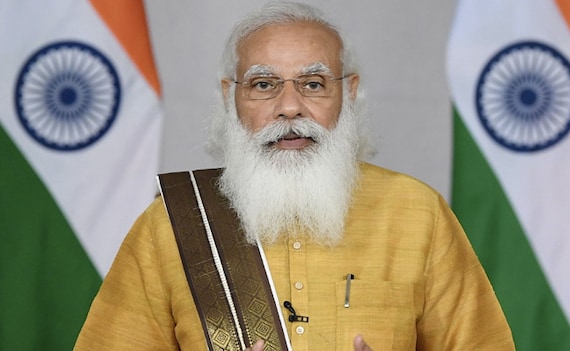From June 21, all adults will be able to receive free vaccinations from the Centre.
On Monday, India’s prime minister said that the country would revert to centralized procurement of vaccines against COVID-19, with free vaccines for the 18-44 age group as well as 25% of procurement left to the private sector. This system will be operationalized by June 21.
Modi said that many chief ministers had requested a re-examination of the vaccination strategy before May 1 during a televised address to the nation. The number of participating private hospitals would be limited to 150. They could charge over the manufacturer’s purchase.
The Pradhan Mantri Garib Kalyan Yojana will also extend the free ration distribution scheme to 80 crore people until Diwali, in November.
The Prime Minister’s announcement comes a week after the Supreme Court asked for an affidavit from the Centre on how the sum of ₹35,000 crore allocated in the Union Budget for vaccines has been spent so far. Specifically, the Court wanted to know why these funds could not be used for free vaccinations for those ages 18 to 44, observing that the Centre’s policy of not providing free vaccines to this particular age group was prima facie “arbitrary and irrational.” The affidavit is due on June 15 and the next hearing is on June 30.
Odisha’s Chief Minister had written to chief ministers across the country to push for central procurement of vaccines. As opposed to this, Kerala’s chief minister Pinarayi Vijayan has written a letter to 11 non-NDA state chief ministers urging them to cooperate in requesting free vaccines from the Centre.
Mr. Modi has expressed grief over the loss of life during the massive COVID-19 pandemic in India, saying the government has dealt with the challenges of resources on a war footing to face a “once in a century” pandemic.
“Never in a 100 years has there been such a pandemic, and this saw an unprecedented demand for medical oxygen across the country. We pressed the government, railways, army, air force, navy, and other wings into service to procure medical oxygen and other medicines required in our fight against the COVID19 pandemic,” he said.
As he was being criticized for the shortages of vaccines, Modi defended his government’s record.
We discovered that vaccine coverage for the universal immunization program was around 60% when we first took office in 2014 and launched ‘Mission Indradhanush’ to expand coverage and add other vaccines to make our children’s health better. When COVID-19 hit, our scientists got to work to develop a vaccine to deal with the disease. Government of India set up a vaccine task force in April 2The government provided logistical support, funds, and other encouragement to our scientists and manufacturers, with the result that by the end of the year, we had two “made in India” vaccines. “We are no longer facing the problem of foreign vaccines being decades away from reaching India,” he says.
The vaccination drive against COVID-19 was launched on January 16 according to guidelines provided by WHO and other countries. We prioritised healthcare workers, the elderly, and those with health conditions such as diabetes.
“As Corona cases declined, people began to question why the Central government was making all the decisions. Flexibility in lockdown and one-size-does-not-fit-all type arguments were forwarded,” he said.
As the vaccination progressed from January 16 to April end, India’s vaccination program was running under the Central government, and people were “showing discipline in getting vaccinated when their turn came,” he said.
“Amidst this, demands for decentralization of vaccination were raised, the decision about priority to certain age groups was raised. Many types of pressures were exerted, and certain sections of the media houses ran a campaign to this effect as well,” he said. “So, we announced that from May 1, 25% of all procurement for the vaccination program would be done by State governments. Initially, many States wanted to adopt the old system, but ran into challenges that the Centre had been able to resolve, including dealing with manufacturers and pricing, he said.
“We will be reverting to the old system where the Centre can procure upto 75% of the doses of vaccines and it will provide them free to State governments, even for the age group 18-44,” he said. “Those who want to go to private facilities, that too will be allowed, as private institutions can procure 25% of vaccines from manufacturers, but there will be a cap of ₹150 per dose as service charge over the cost of the vaccine,” he said.
He expressed optimism that more vaccine candidates will be available in the country in the future, including an under development nasal vaccine. He added that trials for vaccines for children were also going on in the country. He urged people to spike rumours over vaccines and encourage as many people as possible to take the vaccine.
The battle over vaccine procurement had been raging for the last couple of months, between the Centre and the States. It is left to be seen how State governments view this reversal of policy, much of it laid at their door.





